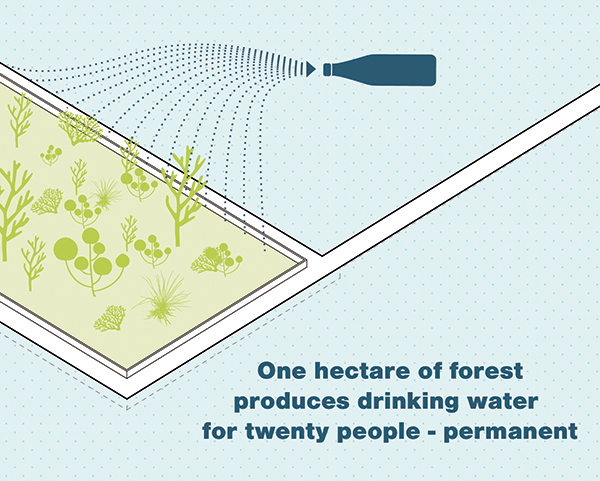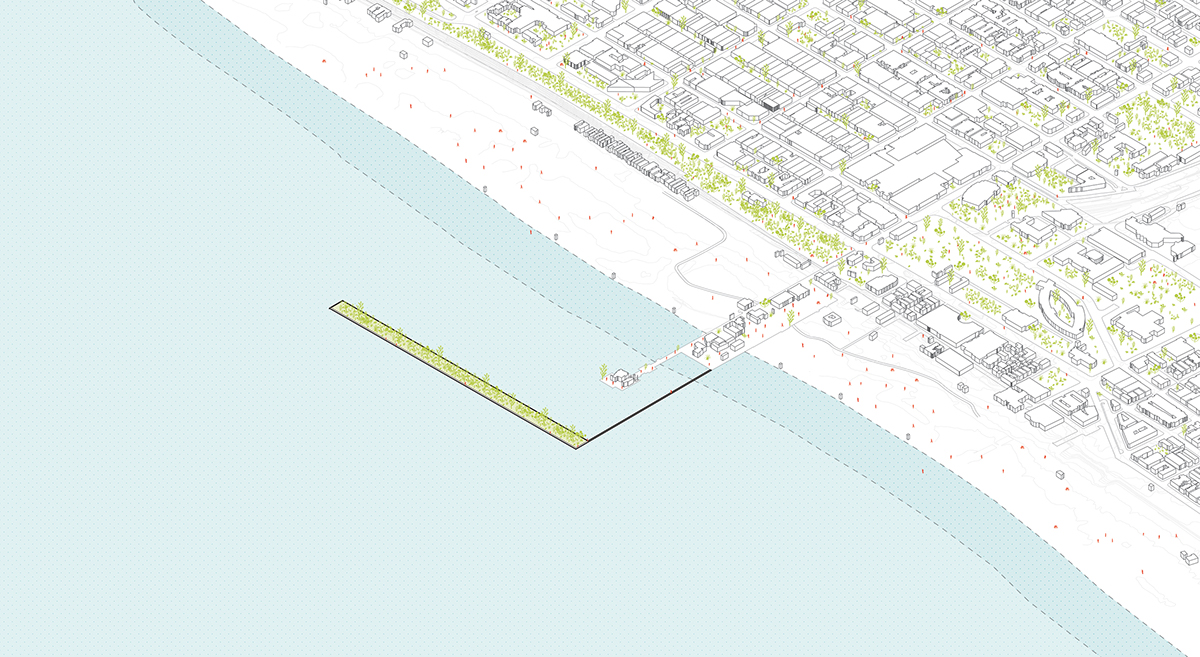

plant drinking water

step 1: setting up the basic structure of the sculpture.

step 2: create different environments for the plants.

step 3: reduction of the salt in the water by reverse osmosis.

step 4: the sculpture grows with the plants.

step 5: the plants of the sculpture take part in the hydrological circle.

step 6: people can visit the garden on the site during low tide and ...

step 7: ... they can take plants home, to plant them in their neighbourhood.

step 8: vegetation spreads over Santa Monica, as more and more trees are planted, the impact on the environment grows.

step 9: the future - people spread the plants over Santa Monica and the region,
and take a big part in the water circle and the production of freshwater.





You just guess to recognize an oasis of green in the middle of the ocean from the beach.
It seems like a forest surrounded by water. During high tide, it is not reachable, but when the water decreases,
you are free to get closer, till you enter an oversized pot of plants.
There are various technologies to produce freshwater and energy.
More importantly, though, especially in L.A., a city crowded with cars, pools and more luxury,
is to make people aware of the reasons of its shortages, instead of serving even more power
and even more water to waste. People finally need to realize the
importance and consequences of the worlds environment, relating to our live.
Let’s start from scratch, let’s plant drinking water.
Usable groundwater is gained out of fog, rainfall, snow and hail. As
an area to seep precipitation, plants and vegetation play an important role. One hectare of ‚forest of
drinking water‘ permanently ensure the annual drinking water demand of 20 people.
Therefore instead of producing more energy or drinking water in an ingenious way,
the project aims to create a long term effect on Santa Monica and the region, by
adding more vegetation to affect the hydrological circle - sustainable.
The concept symbolizes environmental effects and how to make contribution by
reducing and reconsidering the amount of people’s daily water use. During high tide,
a semipermeable membrane on the outside of the platform drains the seawater and
reduces the high amount of salt in the water. As a consequence purewater can be
used to water the growing vegetation. From the exterior part of the sculpture to the
middle area, a zoning into four categories of plant groups differs from less sensitive
to sensitive to salt - Obligatory Halophyte to usual plants. So the outer plants itself
act like a filter, protecting interior plants, which are less resistant.
The vegetation transpires and takes part in the hydrological circle, ending up in precipitation.
Zone 1: Obligate halophyte are plants that need salinity areas to grow.
(Juncus, Salicornia, Spartina, Suaeda)
Zone 2: Facultif halophyte are plants that can grow in salinity areas, but also in non saltwater environment.
(Argentina anserina, Tripolium pannonicum, Plantago maritima, Artemisia maritima)
Zone 3: Indifferent halophyte are plants that tolarate a small amount of salinity to grow.
(Festuca rubra, Agrostis stolonifera, Juncus bufonius, Ranunculus repens)
Zone 4: Normal Vegetation
At low water, people are invited to enter the sculpture and to take part in the production of fresh water and a better environment.
By taking home the plants of the artificial construction it is supposed to spread the sculptures vegetation, to green citys gardens by the societys involvement, by each single individual.
Environmental impact statement:
‚I am taking my part in a better future!‘
The project starts with a‚ living‘ sculpture of vegetation, inviting people to accept
responsibility for the environment by carrying home plants, out of the oversized pot.
Greening each individual garden, means greening the city Santa Monica in its entirety.
Even though you will not see the effects immediately, there will be a
substantial long-term impact on our planets hydrological circle, thus on the production of fresh water.



(LAGI) Land Art Generator Initiative Competition
http://landartgenerator.org/







